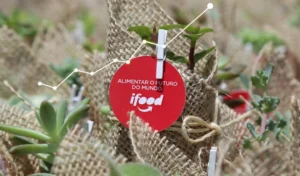Some farms in Europe and the United States have a different landscape. Anyone looking at the plantation sees farmers, tractors and even animals moving beneath a vast canopy of solar panels, which sit three or four meters high from the ground.
This double is the basis of the system agrivoltaic, or the coexistence, on the same land, of agriculture with photovoltaic panels, which transform solar energy into electrical energy. It differs from solar farms traditional because the height of the plates and the spacing between them are adjusted to allow the movement of workers, animals and machines.
In the agrivoltaic model, the spacing and angle of the solar panels are designed so that the light can reach the plantation where it is needed. Shade areas have the advantage of protecting the soil from high temperatures and excessive water loss, points out Stefano Amaducci, professor in the Department of Sustainable Vegetable Production at the Catholic University of the Sacred Heart (Italy). Additionally, the plantation releases water into the air, which cools the solar panels, creating a symbiotic relationship between the plants and the panels.
The system has attracted interest because it addresses two important environmental concerns. On the one hand, it is a solution for hot and dry places — which tend to become increasingly common due to the global warming. On the other, it is a way to expand the supply of renewable energy to large cities.
Agrivoltaic projects generally require electricity generated by solar panels to supply the farm, but the idea is to produce excess energy to distribute it on the local grid — which, in turn, becomes a new source of income for farmers. .
Renewable energy for cities
In Europe, agrivoltaic farms have existed for almost a decade. Now, they are starting to emerge in China, Australia and Korea. And they arrived in the United States, where their implementation aims to enable energy production close to large cities, where food-producing farms are located — solar farms tend to be further away from urban areas.
“Large facilities in the middle of nowhere will not solve all of our energy problems. Transporting this energy can be very expensive,” says Greg Barron-Gafford, biogeographer and assistant professor at the University of Arizona. to The New York Times.
According to the newspaper, this symbiosis between the plates and the crops is already starting to produce results. A project in the state of Arizona saw a threefold increase in crop yields in the agrivoltaic system, as well as a reduction of up to 50% in irrigation requirements, thanks to the shade provided by the panels.
For now, a major obstacle to the advancement of agrivoltaics —which has not yet reached Brazil— is the cost of steel, used in the components and “legs” of the plates, both above ground and in the foundation (which is generally twice as expensive). the visible height of the rods). When will this news arrive here?


